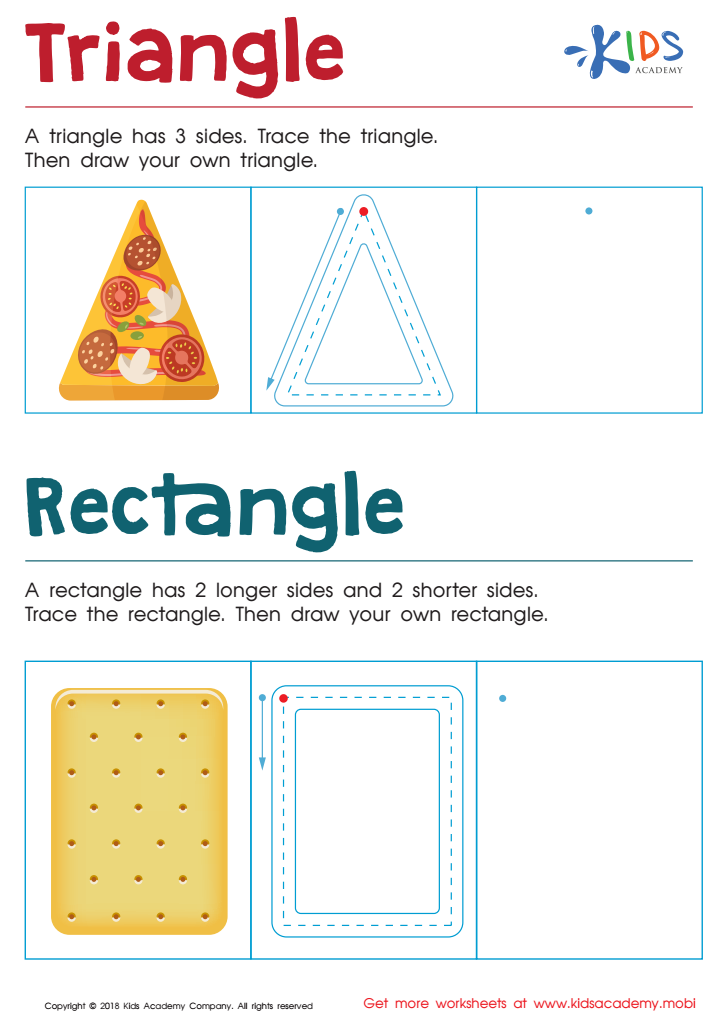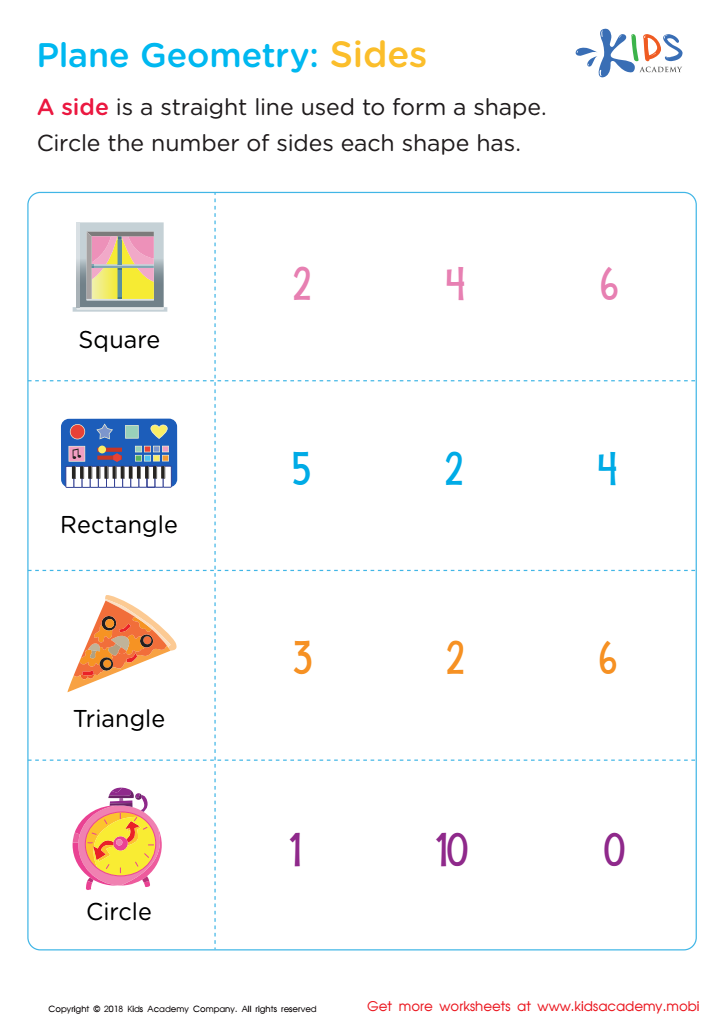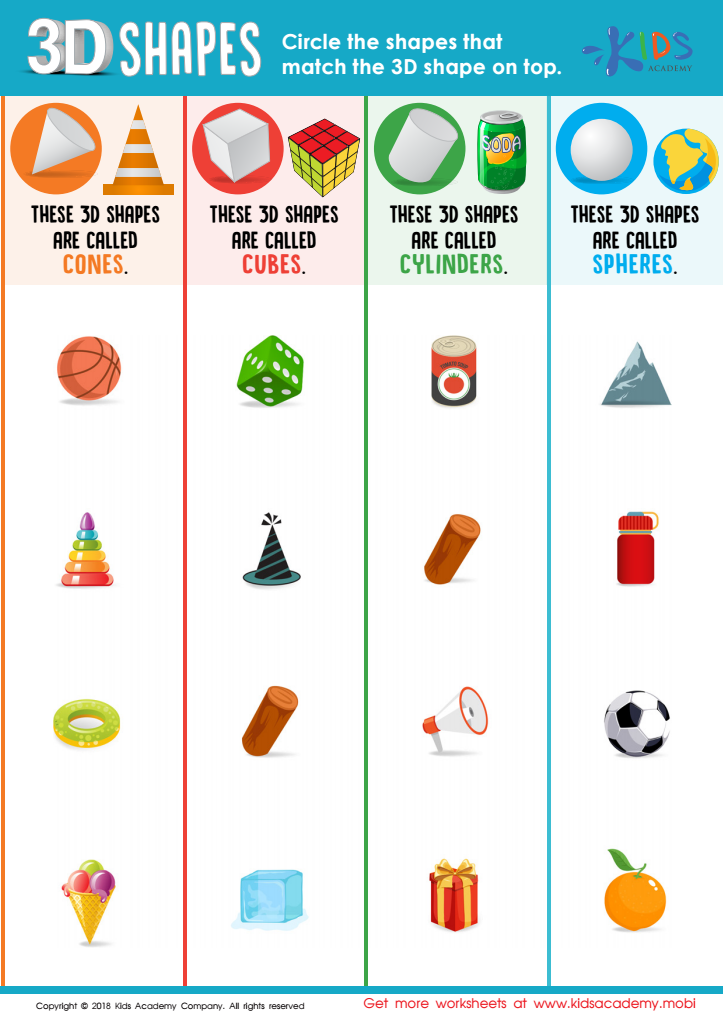Differentiating shapes Normal Worksheets for Ages 4-9
3 filtered results
-
From - To
Welcome to our Differentiating Shapes Normal Worksheets, designed specifically for children aged 4-9! These engaging and educational worksheets focus on helping young learners identify and differentiate between various shapes, including circles, squares, triangles, and more. Through fun activities like tracing, coloring, and matching, kids will enhance their shape recognition skills while enjoying creative challenges. Our user-friendly format allows for easy printing and versatility for classroom or home use. Ideal for early-grade teachers and parents seeking to foster foundational geometry skills, these worksheets provide the perfect blend of learning and fun, ensuring children build confidence in their mathematical abilities. Explore now!


Triangle Rectangle Worksheet


Plane Geometry: Sides Worksheet


3D Shapes Worksheet
Differentiating shapes, particularly for children aged 4-9, is crucial in early childhood education as it lays the foundation for spatial reasoning, problem-solving, and critical thinking skills. At this developmental stage, children are keen observers of their environment, and providing them with varied experiences related to shapes enhances their understanding of the world around them.
Parents and teachers should care because recognizing and categorizing shapes helps children develop their cognitive abilities and language skills. Differentiating shapes encourages creativity, as children can explore how different shapes can combine or transform to create new objects. It also fosters fine motor skills, as children often engage in hands-on activities like drawing, cutting, and modeling shapes.
Furthermore, teaching shape differentiation is linked to mathematical proficiency. An understanding of shapes is essential for future concepts such as geometry and measurement. By incorporating diverse activities—like puzzles, games, and creative arts—parents and teachers can cater to various learning styles, ensuring that every child engages with content in a meaningful way. Ultimately, ensuring children grasp shape differentiation promotes overall cognitive growth, setting a solid foundation for learning as they progress through their education.
 Assign to My Students
Assign to My Students















